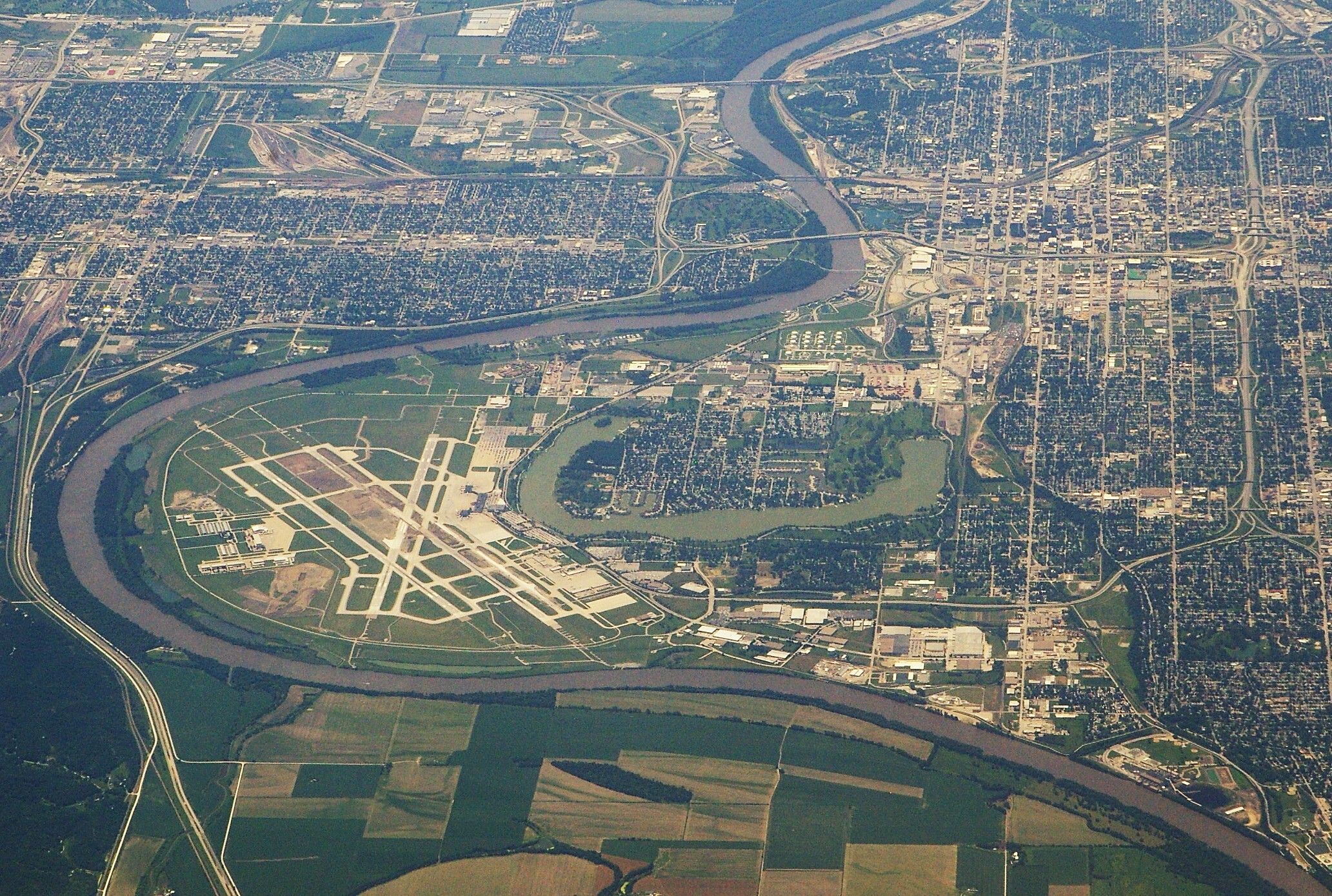
Photo: Aerial view of the North Omaha area by Ron Reiring
Burning mad. That’s one way to describe the loose coalition of North Omaha residents and environmental activists concerned about the Omaha Public Power District’s decision to continue burning coal at its 1950s-vintage North Omaha Station through the end of calendar 2026. Through burning coal, OPPD’s North Omaha Station emits toxic nitrogen oxide and sulfur oxide, which are linked to various respiratory problems. Not surprisingly, North Omaha community members, 68 percent of whom are people of color, suffer rates of asthma that are among America’s highest.
OPPD’s original plan was to convert two coal-burning units at its North Omaha Station to run on cleaner-burning natural gas by 2023. The objective? To reduce pollution while satisfying peak power demands in Omaha and the 13 counties the utility serves. At the same time, OPPD was exploring the development of renewable energy sources, such as solar and wind, to reach its goal of net zero emissions by 2050.
However, converting the North Omaha Station to natural gas hinged on bringing the new Standing Bear Lake and Turtle Creek natural gas production stations online. That meant gaining approval from both the Southwest Power Pool (SPP) — the transmission organization overseeing power grid operations in OPPD’s region — and the Federal Energy Regulatory Commission. When utilities transition from coal power to other energy sources, federal rules require them to prove that they will be able to maintain a reliable energy supply to customers. In 2022, so many new project studies were in the (literal) pipeline that a national interconnection study backlog forced a delay. OPPD’s board postponed the conversion of its North Omaha coal-burning units to the end of 2026.
But that’s not the whole story
Demand for energy in Omaha has exploded since the city, state and OPPD collaborated to attract mega data centers and their high-tech jobs to the Metro. Initially, fly-over Omaha wasn’t even on the radar of tech giants Meta and Google. Then, OPPD marketed an irresistible package of special rates, relatively inexpensive land and a motivated work force. It worked, and Google and Meta moved quickly. Former Nebraska Governor and current United States Senator Pete Ricketts credited OPPD’s efforts as the “linchpin” of a successful campaign to bring Silicon Valley to a silicon prairie.
Data centers require massive amounts of power to drive the creation and application of artificial intelligence (AI). So much energy, in fact, that, if OPPD were to shut off the North Omaha Station’s two coal-burning generators now, it could crash the entire area’s electricity system.
And Nebraska is not alone. The Washington Post reports that similar scenarios are playing out in Georgia, Utah and Wisconsin and notes that “The Nebraska story reveals in detail how the race by giant technology companies to gain the advantage in AI is conflicting with climate goals and potentially harming public health.”
Power to the people?
Communities affected by these power grabs often feel powerless. According to Post reporting, tech companies rationalize the continued use of coal-fired plants to power data centers by purchasing clean energy elsewhere on regional power grids. The power grid serving the Omaha region spans 14 states, from Louisiana to Montana, and some analysts believe that many of the green projects now under way would have occurred regardless of the tech giants’ power needs.
Following orders issued by President Donald J. Trump, new Environmental Protection Agency Administrator Lee Zeldin — a former House member from New York with virtually no regulatory experience — “is expected to work to erase rules to fight climate change and chemical pollution, while shutting down programs designed to help poor and minority communities that are disproportionately affected by pollution,” reports Coral Davenport in The New York Times. Administrator Zeldin has contended that existing environmental regulations have “unfairly targeted coal-fired power plants.”
In a KMTV special report, Global Center for Climate Justice Advocate and North Omaha resident Anthony Rogers-Wright cited the community’s decades-long effort to make the neighborhood a safe place to live and work. “These people are nothing but sacrificial lambs” for “out-of-town and out-of-state mega corporations like Mega and Google,” he emphasized. And, in this new, increasingly laissez-faire regulatory climate, Rogers-Wright worries that the utility could once again push back its deadline for shutting down its coal-burning generators.
To make your voice heard, contact the OPPD board and your state and Congressional representatives.
Information for this story was gathered from:
The Washington Post; The Nebraska Examiner; KMTV 3 News Now Omaha; Outlets, the customer newsletter of the Omaha Public Power District; and The New York Times.

